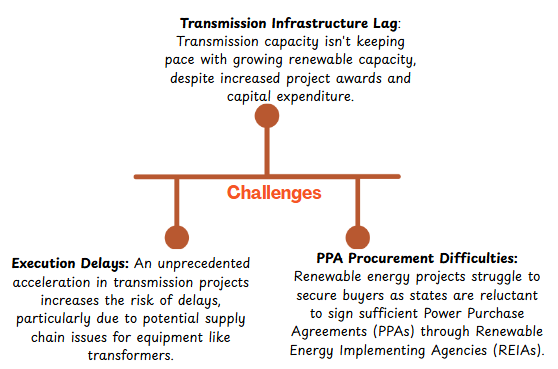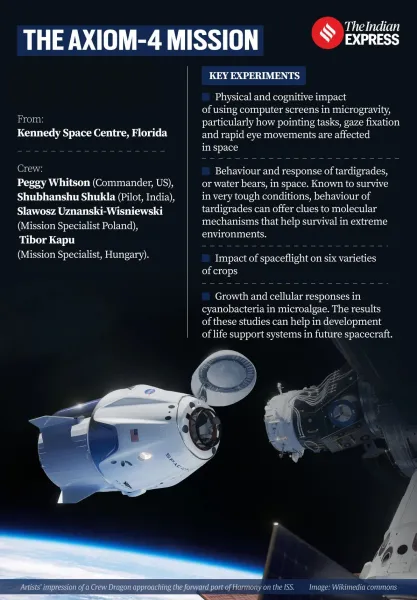POLITY
Rajya Sabha may form panel to probe hate speech charges against HC judge Shekhar Kumar Yadav - The Indian Express
Rajya Sabha Chairman Jagdeep Dhankhar is likely to form an inquiry committee to investigate alleged hate speech by Allahabad High Court Justice Shekhar Kumar Yadav, following an impeachment notice submitted by Opposition MPs. The process of verifying the required signatures is currently underway.
What is Hate Speech?

Hate speech, as per the 267th Law Commission Report, is an incitement to hatred, primarily against groups defined by race, ethnicity, gender, sexual orientation, or religion. The context is crucial. It harms individuals and society by inciting hatred, violence, discrimination, and intolerance.
Legal Position in India
India's Constitution guarantees Freedom of Speech and Expression (Article 19(1)(a)), but Article 19(2) allows for reasonable restrictions to safeguard sovereignty, integrity, security, public order, dignity, morality, and prevent defamation or incitement to offense.
Ethical conduct by those in power is urgent. By promoting education, strengthening legislation, and enforcing codes of conduct, India can foster tolerance, respect, and responsible governance to combat hate speech's societal threats.
Economy
New base year for GDP, CPI, IIP from early 2026 - Indian Express
According to the Ministry of Statistics and Programme Implementation (MoSPI), the base years for key economic indicators — Gross Domestic Product (GDP), Index of Industrial Production (IIP), and Consumer Price Index (CPI) — will be revised starting next year.
Key Points
- MoSPI is revising the base years for GDP, IIP, and CPI to better reflect current economic realities.
- New GDP base year: 2022–23; revised series to be released on February 27, 2026.
- New IIP base year: tentatively 2022–23; updated IIP to be released from FY 2026–27.
- New CPI base year: 2024, based on NSO’s Household Consumer Expenditure Survey (HCES) 2023–24 data.
- Revised CPI series expected to be published in the first quarter of 2026.
- Earlier plan to use HCES 2022–23 data for CPI dropped in favour of more recent 2023–24 data.
- Finalisation of CPI item basket and weighting diagram is currently underway.
- CPI basket likely to include better representation of real housing and rental prices.
- Changes aim to align national indices with updated consumption and production patterns.
- Revisions crucial for accurate measurement of inflation, growth, and policy formulation.
What is a Base Year?
A base year serves as a reference point in economic and statistical analysis, used to compare and assess changes in indicators like GDP, CPI, and IIP over time.
It provides a fixed benchmark—typically set at 100—to measure real growth by eliminating the effect of inflation.
Significance of the Base Year:
- Facilitates accurate tracking of real changes in the economy by adjusting for inflation.
- Essential for constructing index numbers (e.g., CPI = 100 in the base year).
- Ensures data reflects contemporary economic realities, such as current prices, consumption habits, and sectoral shifts.
Environment
India to add 75 GW renewables in FY26 and FY27, investments to surge 52% - Indian Express
India is set to add 75 GW of renewable energy capacity in FY26 and FY27—a 53% increase from the previous two years—according to Crisil Ratings, signaling strong momentum in green energy investment and infrastructure.
What is Renewable energy (RE)
It is energy derived from natural sources that are replenished at a higher rate than they are consumed. Renewable energy sources are plentiful and all around us. For Example: Solar Energy, Wind Energy, Geothermal Energy, Hydro Power, Ocean Energy, Bio Energy.
Key Highlights
- 75 GW renewable capacity to be added in FY26 & FY27, up from 49 GW in FY24 & FY25.
- Overall renewable capacity expected to reach 233 GW by March 2027.
Hybrid & storage-linked projects to form 37% of upcoming capacity (up from 17% earlier).
- Hybrid projects combine solar & wind, enabling more consistent and round-the-clock power supply.

- Investments in renewables to jump by 52% from ₹2.5 lakh crore to ₹3.8 lakh crore in FY26–27.
- Surge in capital due to higher share of capital-intensive hybrid & storage projects.
The projected 45 GW capacity addition in FY26, heavily reliant on renewables, underscores the urgent need for expedited transmission development and efficient execution. Concurrently, proactive state engagement in signing PPAs is critical to ensure demand for this new generation, mitigating stranding risks and accelerating India's energy transition goals.
Science and Technology
Why Axiom-4 matters - Indian Express
The Axiom-4 mission to the International Space Station (ISS) has been postponed to June 11 due to weather conditions.
About Axiom Mission
- The Axiom 4 mission is being operated by private US space company Axiom Space, in partnership with NASA and SpaceX. The mission will lift off from Launch Complex 39A at NASA’s Kennedy Space Center in Florida.
- Crew Composition: Includes astronauts from India, USA, Poland, and Hungary.
- Commander: Former NASA astronaut Peggy Whitson.
- Pilot: ISRO astronaut Shubhanshu Shukla (India).
- Other crew: Sławosz Uznański-Wiśniewski (Poland) and Tibor Kapu (Hungary).
- Launch Vehicle: SpaceX Dragon spacecraft.
- Duration: Up to 14 days aboard the ISS.
- Objectives: Conduct scientific research, educational outreach, and commercial activities.
Diabetes Research in Space
- Objective: To explore the feasibility of allowing insulin-dependent diabetic individuals to travel in space.
- Current Limitation: Diabetic patients are not selected as astronauts due to the difficulty of managing blood sugar levels in microgravity.
- Significance: This study is a major step towards inclusive human spaceflight by addressing health-related barriers.
- Research Focus: Investigating how space conditions affect diabetes management, paving the way for future medical advancements in space travel.

Significance of Axiom-4 Mission for India – Key Points
- Marks ISRO-NASA collaboration, aiding Gaganyaan mission preparations.
- ISRO designed 10 experiments, including those on muscle dysfunction and screen use impact in microgravity.
- One experiment focuses on spaceflight effects on six varieties of crop seeds.
- Tardigrades (extreme-surviving microbes) sent to ISS to study life in extraterrestrial conditions.
- Enables ISRO to test experiments planned for Gaganyaan and refine them for future missions.
- Shukla's experience will provide critical insights for training future Indian astronauts.
BHASHINI and CRIS Sign MoU to Build Next-Gen Multilingual AI Solutions for Indian Railways -PIB
The Digital India Bhashini Division (DIBD) and the Centre for Railway Information Systems (CRIS) signed an MoU to deploy multilingual AI solutions across Indian Railways' public-facing platforms, enhancing linguistic inclusion and digital transformation.
About BHASHINI
BHASHINI (BHASHa INterface for India) is an AI-driven language translation platform launched in July 2022 under the National Language Translation Mission (NLTM).
It aims to:
- Break down language barriers across 22 Indian languages.
- Chatbots and voice assistants for multilingual passenger support will be co-developed.
- Multilingual over-the-counter interfaces for enquiries will be created.
- Services will scale across websites, mobile apps, kiosks, and call centers.
- Enhance digital services and internet accessibility with voice-based functions.
- Provide open-source AI/NLP resources for Indian MSMEs, startups, and innovators.
- Is implemented by the Digital India BHASHINI Division (under MeitY).
- Is accessible via Android and iOS apps and allows crowdsourced contributions through its 'Bhasadaan' section.
Significance of the railway reforms
- Boost Economic Development: Essential for India to achieve its $5 trillion economy goal.
- Combat Departmentalism: Address inefficient decision-making from vertical silos.
- Enhance Administrative Efficiency: Simplify management and empower decision-making.
- Achieve Modernization: Update infrastructure, services, and processes to meet national needs.
- Improve Cost-Effectiveness: Reduce the financial drain on the exchequer.
- Ensure Safety: Address high accident rates and enhance passenger security.